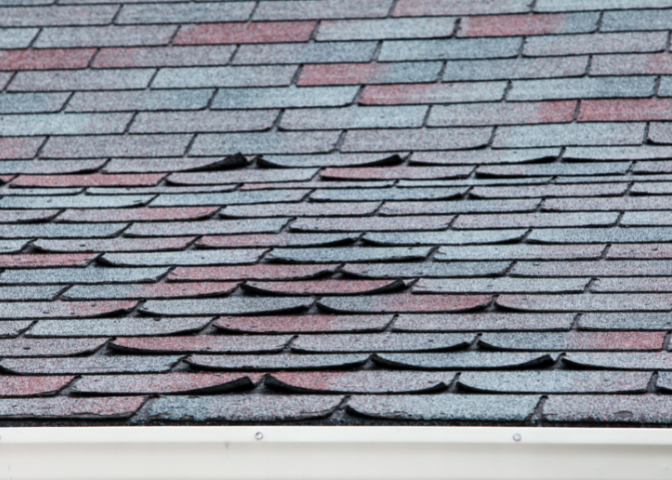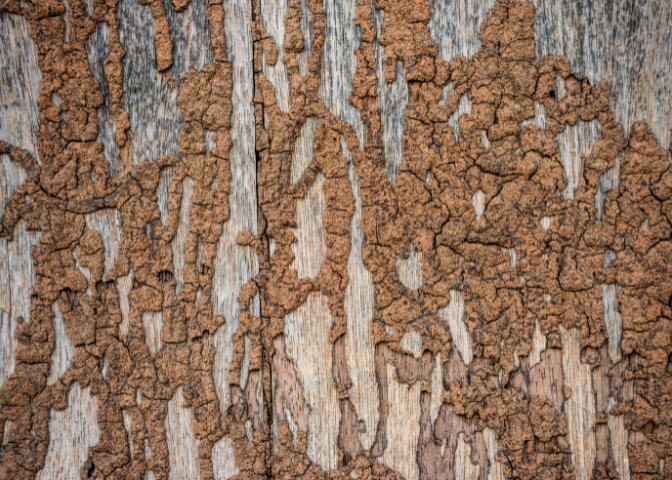The CRS Blog
Spring maintenance - Keep up with your home like a pro!
As days grow longer and the weather beings to warm our chilly bones, we're all eager as ever to get back to the outdoors and neglect taking care of our homes. After all, spending less time indoors means we may not notice things such as mold growth, foundation cracks, leaky pipes, and other changes that may have occurred over a long winter, or are may come about during an especially rainy spring.
Make sure you're on top of your home's condition before you run to jump into the next season. To ensure you don't forget a thing, here's our guide to maintaining your home efficiently, just like a pro!
10 Ways to Maintain Your Home This Spring
1) Clean, Declutter & Inspect
Deep cleaning each spring is the easiest way to keep your home healthy & organized. When you start with a clean space, it's easier to scan for items that might need more of your attention this year.
Tackle the tasks that apply to all rooms (like sweeping or carpet cleaning), before you hit each room one by one for more specific cleaning needs. Don't forget to look at areas such as under sinks, behind appliances, or above the cabinets - places you may not normally check.
As your home becomes less cluttered, items of note will become clearer. For example, you may see signs of mold or mildew, cracks in your foundation that were hidden by clutter, or even evidence of rodent nests who were trying to warm up inside your home over the winter!
2) Heating, Ventilation & Cooling
As temperature changes, it is important to check your HVAC to avoid high utility bills or a busted air conditioning unit before those hot days creep up. Consider the following:
- Change your air filter to reduce energy use and to improve the air quality of your home
- Make sure that any holes or leaky joints in your ductwork are sealed
- Make sure that any drainage holes are clear of any clogs
- Hire a professional to clean the interior of the AC unit and service both the AC and furnace
Taking initiative early is the best bet, consider the heating & cooling companies you may rely on will likely be busy the warmer it gets outside. The saying must be true, early bird gets the worm!
3) Leaks, Mold & Mildew
Did you know that under the right conditions, unattended leaks can cause mold to grow easily, spreading in a matter of days? Yikes!
You may spot mold as it begins to grow, but sometimes it grows in areas not easily seen, such as on ceiling tiles or behind wall coverings. Still, if you can see it, you might be able to smell it, as mold is usually accompanied by a musty odor.
It’s highly recommended to check rooms with water access, anywhere a leaks may have occurred, as well as dark, damp, or cool areas such in laundry room, or basements (all of which can all be hot-spots for mold issues).
To catch mold growth, check for the following:
- Areas where there is a sound of dripping, trickling, or rushing water
- Stains on the walls or ceiling
- A damp or musty smell
- Sudden changes in water pressure
- Damp or wet areas anywhere inside your home
- A sudden increase in the water bill

Be sure to also inspect the following for signs of mold and water leaks:
- Areas nearby indoor or outdoor pools or hot tubs
- Areas nearby water features such as fountains, ponds, wells, or lakes
- Around water heaters, air ducts, crawlspaces & attics
- Laundry rooms, basements, sheds & garages
- Underground & rooftop parking areas
Should you find evidence of mold or suspect mold growth, it's best to contact a mold expert for their advice on remediation or treatment.
4) Smoke & CO2 Detectors
Yes, even the hardwired detectors should be tested at least once a year, even if the detector is not chirping. It's better to be safe than sorry, especially considering that CO2, due to is odorless nature, can remain virtually undetected until it's too late!
Each year, on each device you should press the test button and make sure you hear a beep or chirp sound. If you don't hear the sound:
- Remove the cover
- Replace the battery with a brand-new one, when applicable
- Close and snap the device back into place
Also, check the manufacture date stamped on the device. When it is over 10 years, it’s time to replace the device, as it has already lost its efficacy. Consider an upgrade to the newer lithium battery smoke detectors and you won't have to worry about replacing the batteries at all for up to a decade.
5) Roof & Gutters
It's vital that you wait until the weather allows for safe access to your roof, for your own safety. Once the surface is dry & warm enough so that it no longer freezes over, you should check the condition before the rains arrives in full-force!
The following is recommended:
- Use a special gutter scoop to thoroughly clean out your gutters and to avoid damaging them as you do it
- Check for damage to flashing, tuckpointing
- Look for any evidence of rodent nests or damage
- Check for any missing, curling, or worn-down shingles
- Assess for evidence of mold or algae on shingles
If you see large areas of damage, consider a roof repair or replacement this spring and check with your insurance if they are able to cover some of the roof damage. When possible, it's best to schedule a professional inspection.

6) Concrete Driveways & Foundation
Inspect the concrete areas around your home for any cracks, gaps, and other damage. You can take care of some minor damage and small cracks with concrete (epoxy) patch kits. However, it's best to seek professional help to determine what is or is not major damage, as well as the best remedy for any issues you find.
Cracks might appear sooner than you would think & professional foundation repair experts can help you problem solve how to prevent further damage in the future. Areas of concern could include:
- Driveways
- Garage pads
- Basement floors or foundation
It's important to consider the foundation condition of secondary buildings on your property as well, like sheds, detached garages, & other outbuildings. Earth homes & slab foundations & homes with finished basements may require an especially attentive eye, so a professional consultation is highly recommended in these instances.
7) Exterior Faucets, & Pipes
Let your outside faucets run to test for possible damage from the cold winter months. To do so, let the water run freely, place your finger over the opening. If the water stops flowing, you may need to call a professional to inspect the piping for cracks or clogs.
As you run the water, walk the area where pipes run through the yard, including french drains during a period of dry days without rain.
Items of concern might include:
- Cracked or broken sprinkler lines
- Water buildup near the foundation
- Debris buildup near relief drains/french drains
If you find issues that concern the piping heading toward or near the street, consult your local municipality, city, homeowners association, or county sewer program. Some areas provide relief to homeowners up to a certain dollar amount for issues concerning their portion of the pipes.
8) Decks & Porches
Over the harsh winter months, you probably didn't spend much time hanging out on the deck, sitting on the front porch, or walking your property. Take time to check for water stains on support beams, warping wood, or discoloration on wood structures.
Keep a keen eye out for loose or rusty nails and perform any necessary maintenance to secure stairs and railings. Test the sturdiness of decking by feeling for soft spots in the wood and especially look for evidence of termite or carpenter bee damage.
When you're not sure, it's best to hire a pest control expert to give you a second opinion, as termite colonies, in particular, can lead to damage to other parts of the house, including foundation issues.

9) Windows & Doors
Possibly the easiest thing to forget about is the entryways to your home. You use them every day, but it's hard to notice how wear and tear could be taking place right before your eyes.
To keep bugs from entering, prioritize fixing or replacing the screens on windows and doors. Now would be a good time to clean your windows, as dirt & dead bugs can start to build up quickly.
Using a vacuum attachment, clean the tracts and seals or a soft brush before washing the panes. Go the extra mile and carefully remove the panels from the tracts using the pinchable side pieces to clean the outside of the windows as well.
Finally, look out for tall grasses or stagnant water near your windows as mosquitoes breed in stagnant waters.
10) Lawn & Landscaping
Now is the best time to get out in the yard and start the yearly process of maintaining the curb appeal of your home. This spring, make time to:- Finish raking any leftover leaves in the yard
- Aerate the soil
- Fertilize the grass and plants
- Seed and lime the yard, as needed
- Set up regular irrigation (timed sprinklers, etc.)
- Trim hedges, trees & bushes
Tired of managing your own rental properties?
Get someone else to do all the nitty-gritty so you don't need to!
Want to learn more about managing your personal or professional real estate? Our team specializes in helping people make smart real estate investments. From renting an apartment, buying or selling a home, purchasing a rental property or managing one, we've got you covered!
Read more articles here or start a chat with our staff to help you with your next real estate venture.

